2024
01.03

| Kidney disease is one of the common diseases in dogs and cats. Its prevalence and mortality rate are very high. There is a high chance that after being diagnosed with kidney disease, one must monitor their diet and take medications for life. Therefore, it is important for dogs and cats to get early health check-up in order to prevent kidney disease. |  |
Proteinuria is one of the most significant symptoms in dogs and cats with kidney disease. With the severity of kidney disease, the protein concentration in the urine will also increase; therefore, urine protein test strips are generally chosen as an early test in veterinary clinics.
Another tool for screening for kidney disease is the detection of microalbumin in urine. However, compared with the quantitative method, the sensitivity and specificity of urine protein test strips in both dogs and cats are around 50%, which may cause misjudgment of test results. Therefore, urine protein test strips are not suitable for screening early kidney disease; generally speaking, when the urine protein test paper shows a positive reaction, the concentration of microalbumin in the urine has exceeded 50 mg/dL. At this time, the kidney disease has developed into an irreversible disease and must be treated for life.
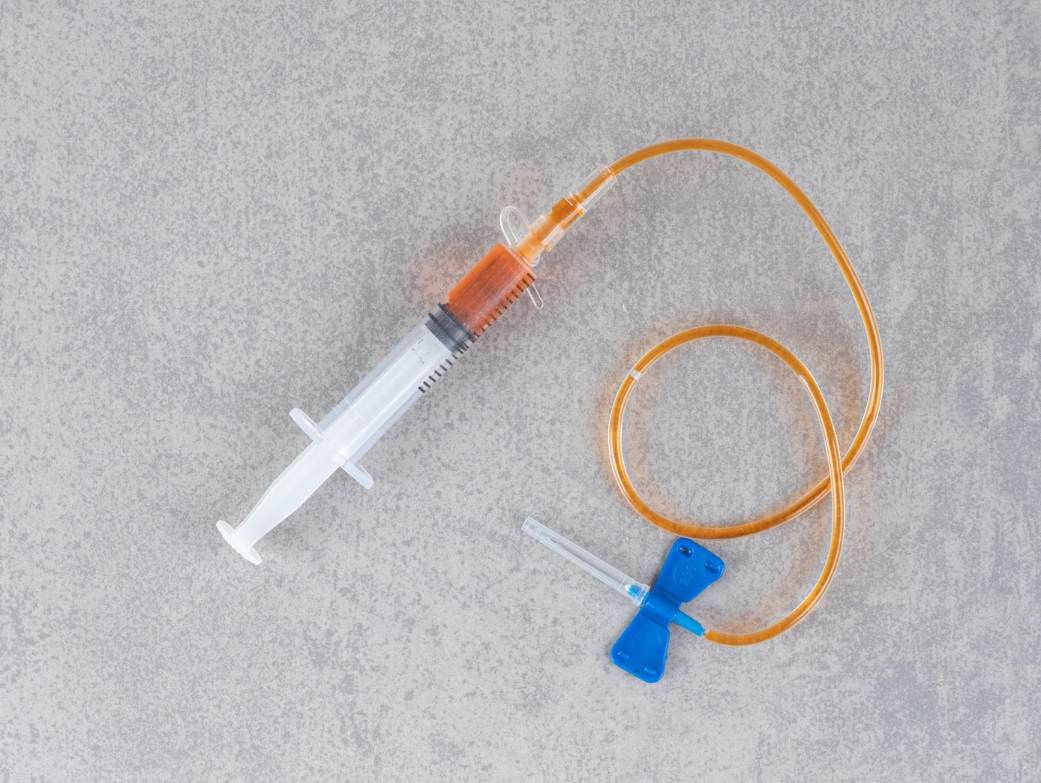 |
 |
| Cystocentesis | Urine Protein Test Strips |
The URINE II Panel uses a chemical and immunoassay method to quantify micro-albumin (mALB), urine protein (UP) concentrations in urine and has a sensitivity and specificity of more than 90%. In addition, in order to eliminate the error in estimating mALB caused by urine volume, this panel is added to detect creatinine in urine (UCRE). The divided UACR(mALB/UCRE) and UPCR (UP/UCRE) are very suitable for screening early kidney disease and has now become a gold standard in the human medical community.
Ideally staging of CKD should be done based on at least two urine samples collected over a period of at least 2 weeks. Dog and cat patients that are persistently borderline proteinuria should be re-tested within 2 months and re-classified appropriately. The non-proteinuria and borderline proteinuria range may be categorized as microalbuminuria. It is important to monitor microalbumin levels in urine to check renal health persistently.
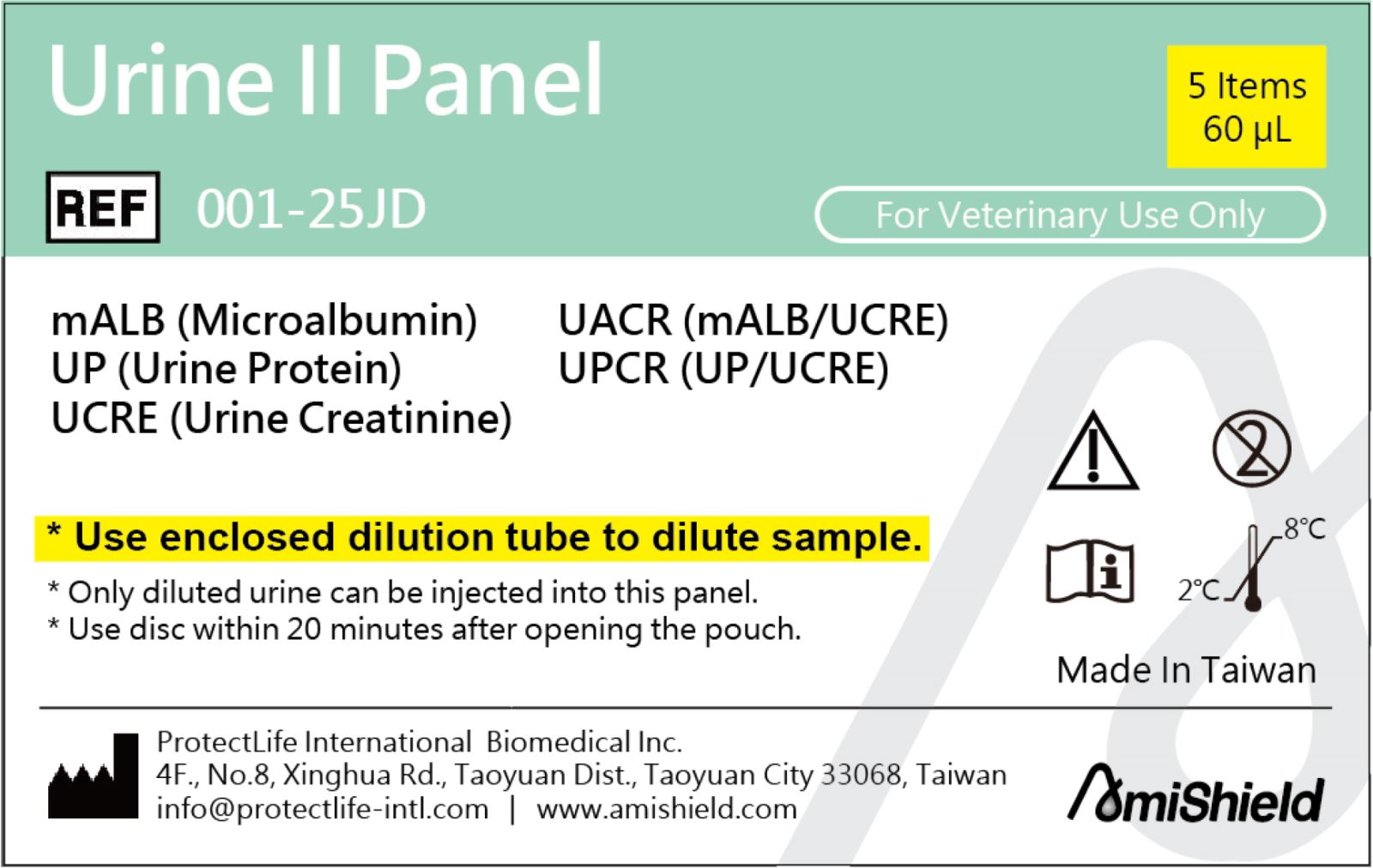 |
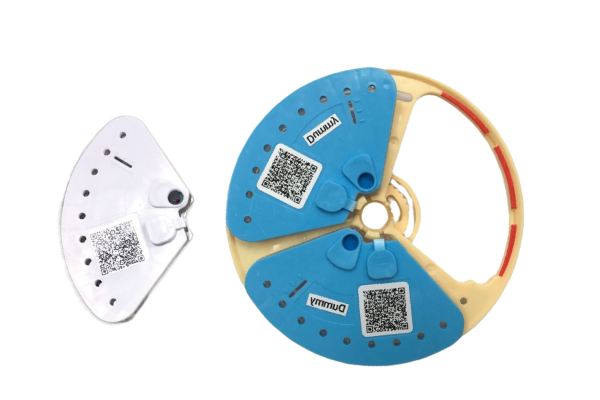 |
.jpg) |
When to Use1. Screen for early kidney disease in dogs and cats.2. Recommended health check-up items for elderly dogs and cats (even if blood biochemistry and urine routine test strips are normal). 3. Diabetes/kidney disease tracking project. 4. Renal function screening before anesthesia. |
Kidney disease grade
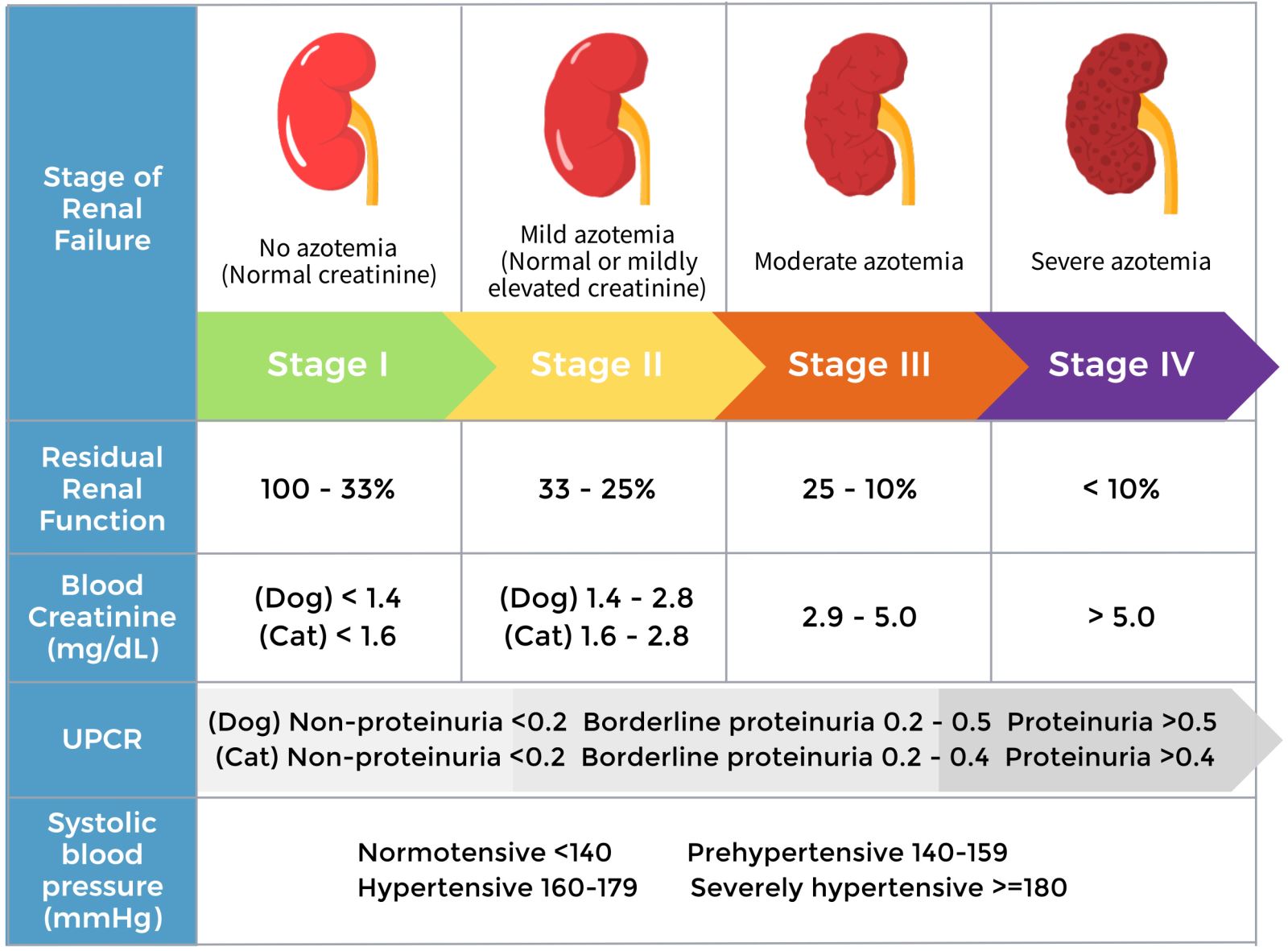
Reference range
| Parameter | Dog / Cat | Unit |
| mALB | < 2.5 | mg / dL |
| UP | < 20 | mg / dL |
| UCRE | 4.0 - 400.0 | mg / dL |
| UACR (mALB / UCRE) | < 30.0 | mg / g |
| UPCR (UP/ UCRE) | < 0.2 | - |
Effects of blood pressure
The systolic blood pressure level is correlated to the risk of organ damage or complications. In the absence of evidence of existing organ damage, persistently monitoring blood pressure is important for renal health checks.For most dogs and all cats, the IRIS blood pressure substages are as follows:
| Systolic Blood Pressure (mmHg) |
Blood Pressure Substage | Risk of Future Target Organ Damage |
| < 140 | Normotensive | Minimal |
| 140 - 159 | Prehypertensive | Low |
| 160 -179 | Hypertensive | Moderate |
| >= 180 | Severely hypertensive | High |
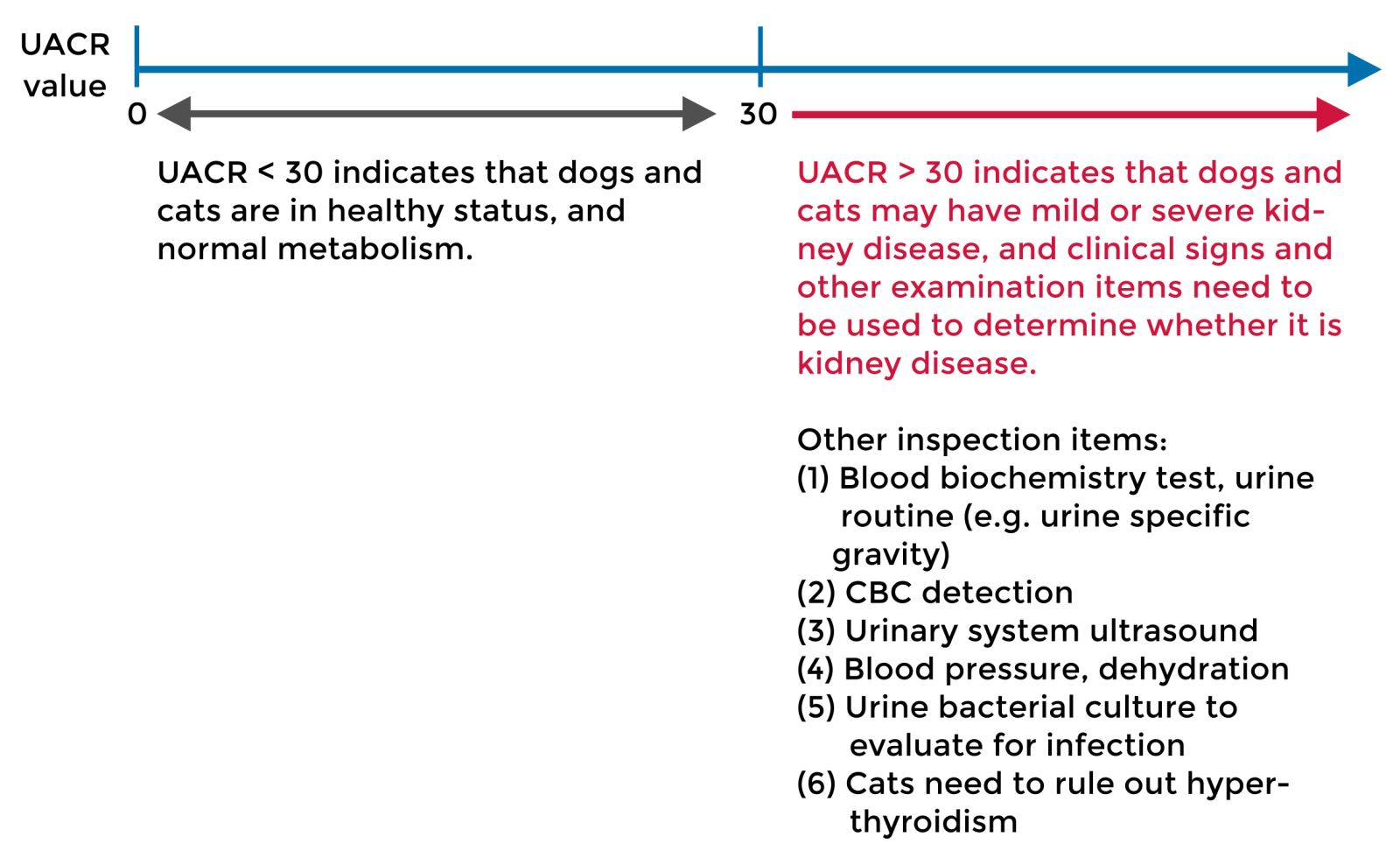
Reference:
- 1. Microalbuminuria When to Test Scott A Brown, VMD, PhD, Diplomate ACVIM, CLINICAL PATHOLOGY FEBRUARY 2009
- 2. Proteinuria in dogs and cats Leyenda H Cathy L Can Vet J 2012 Jun 53 6 631 638
- 3. International Renal Interest Society. 2023 IRIS CKD Staging Guidelines. www.iris-kidney.com.
- 4. International Renal Interest Society (2019) Treatment Recommendations for CKD in Cats
- 5. Syme, H.M., et al., (2006) Survival of Cats with Naturally Occurring Chronic Renal Failure Is Related to Severity of Proteinuria J Vet Intern Med.20:528-535
- 6. Acierno, M. et al., (2018) ACVIM consensus statement: Guidelines for the identification, evaluation, and management of systemic hypertension in dogs and cats.. J Vet Intern Med. 32:1803-1822
- 7. Sparkes, A.H., et al., (2016) ISFM Consensus Guidelines on the Diagnosis and Management of Feline Chronic Kidney Disease. J Feline Med Surg. 2016 Mar; 18(3):219-39





